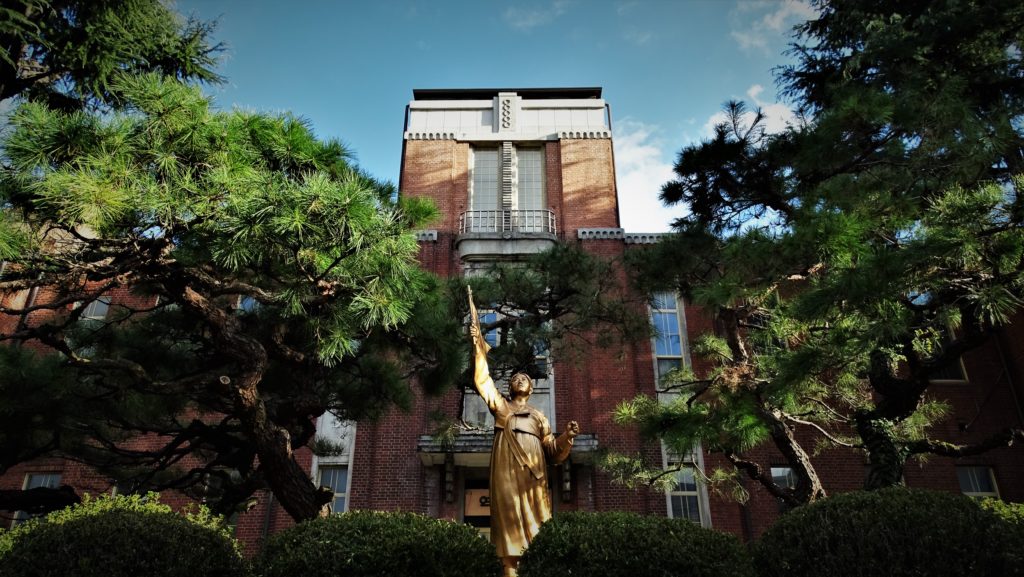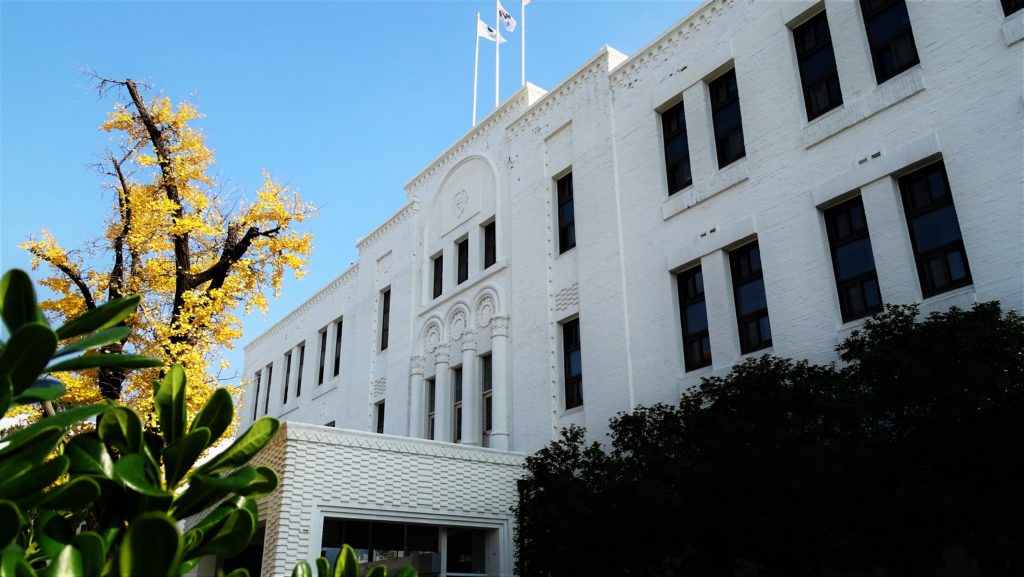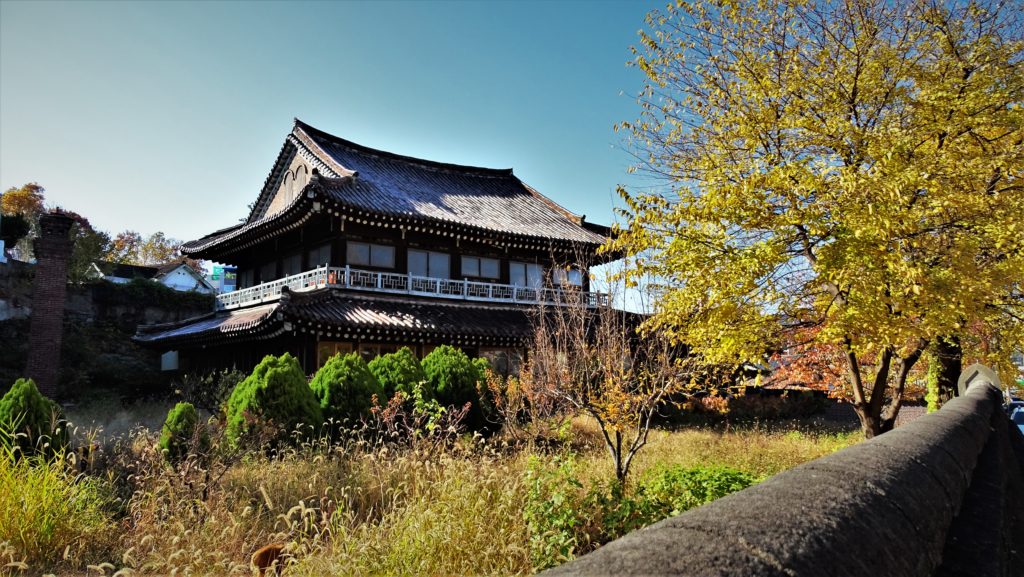Colonialism in Our Midst
Written and photographed by Isaiah Winters
Special thanks to Kim Woo-yeon
In fast-changing places like Gwangju, old buildings don’t age well. Once in disuse, they usually sit around for a few decades in sorry decay until the day they’re bulldozed to make way for something new. There are some notable exceptions to this, however, such as Chonnam National University’s Yongbong Building and the iconic white gables of Chosun University, both of which date back to the 1950s. But besides these and a handful of mid-20th century restorations, does much remain from the Japanese colonial era of 1910–1945?
Fortunately, more still exists than you might think. In fact, there are a few such elegant relics in the downtown area that are all within easy walking distance of each other. In this article, we’ll look at three of them: Chonnam Girls’ High School, the Old Jeollanam-do Provincial Hall, and “Rich Man” Choi’s House. Though few in number, these and other buildings of the same era continue to leave unique aesthetic and historical marks on the City of Light that are worth recalling. So without further ado, let’s begin our miniature tour of Gwangju’s Japanese colonial era architecture.

Chonnam Girls’ High School (전남여자고등학교)
When completed in 1928, this handsome red-brick school must have towered over everything else in Jang-dong, sending strong messages of authority and hierarchy to students and passing adults alike. Despite its modest design, the façade is surprisingly ornate in the places where the hefty brickwork gives way to long, vertical windows trimmed with granite and concrete. Here, the building has flourishes reminiscent of Art Deco, a design style that was the bee’s knees throughout the roaring 20s. This suggests that the architect(s) must have been not only up to date on the architectural trends of the era, but also free to indulge in them to a fair extent.
In terms of the school’s historical relevance, the students of Chonnam Girls’ High School played a significant role in the Gwangju Student Independence Movement, which began on November 3, 1929. The movement was precipitated by a clash that had taken place a few days prior between Korean and Japanese students after the latter harassed a Korean girl. It was at this building, then called Gwangju Girls’ High School, that the female students joined the movement for Korean independence by singing forbidden patriotic songs, decrying Japanese imperialism, and at times refusing to take exams in protest. The movement, which continued for five months, included 54,000 students nationwide and would even spread well beyond Korea before being suppressed.

The Old Jeollanam-do Provincial Hall (구 전라남도청)
Though quite possibly the most iconic building in Gwangju, the city’s centerpiece nevertheless sat abandoned during my first few years here, something which endeared me to Gwangju from early on. Then a windowless, paint-chipped husk, today it stands as a bright and inviting focal point for visitors in the Gwangsan-dong area of downtown. Its design is quite formal and unostentatious, with four columns topped with Corinthian capitals and some modest latticework being the façade’s main artistic flourishes. Today the copious layers of white paint do a good job of hiding the fact that it’s actually made of red bricks, though its roots show through from time to time.
Designed by architect Kim Sun-ha (김순하) and completed in 1930, the building is historically significant for first having been designed by a Korean at a time when government buildings were usually designed by Japanese architects. In addition to having functioned as the administrative center of Jeollanam-do for over 70 years, during the Gwangju Democratic Uprising in 1980, this building is where armed pro-democracy activists made their last stand. Holed up on an upper floor, they courageously fought to the death when their position was attacked by military forces. Fortunately, the sacrifices made within these walls have since been rewarded with the political freedoms South Koreans enjoy today. Now part of the thriving Asia Culture Center, the old provincial hall stands as a testament to many things, including colonialism, democracy, and the future ambitions of an entire city.

“Rich Man” Choi’s House (최부자집)
This eclectic two-story house in Sa-dong is both the strangest and most beautiful colonial-era abode in Gwangju today. Built between 1936 and 1942, it mixes elements of Japanese and Korean architecture that together look unlike anything else. It was originally the house of Choi Sang-hyeon (최상현), the eldest son of landowner Choi Myeong-gu (최명구), who was rumored to be the richest man in Gwangju back during the Japanese colonial era. To demonstrate the Choi family’s vast fortune, the home’s pillars and main lumber were made of pine from the distant Hamgyeong provinces of present-day northeast North Korea, while the roof tiles were brought in from Gangjin in the southwest of Jeollanam-do, making this house a mélange of high-quality materials stretching the Korean Peninsula.
Unfortunately, the house is in a state of increasing disrepair, as its upkeep poses a heavy burden on current resident Choi Sun (최순), the granddaughter of Choi Sang-hyeon. She’s been trying to get the house registered as a tangible cultural asset so that it can be better preserved, but the process isn’t easy. Complicating things is a longstanding property rights dispute that members of the Choi family have with Chonnam National University, with the former owning the house and the latter owning the land it’s on. Meanwhile, some of the sweeping roof tiles have fallen off, the gable windows have been covered with dark fabric, and some of the timbers are feared to be rotting. The hope is that the house will one day soon be recognized as a tangible cultural asset and that the legal parties involved will come to some agreement that allows for its preservation before it’s too late.
The Author
Originally from Southern California, Isaiah Winters first came to Gwangju in 2010. He recently returned to South Korea after completing his MA in Eastern Europe and is currently the chief proofreader for the Gwangju News. He enjoys writing, political science, and urban exploring.





